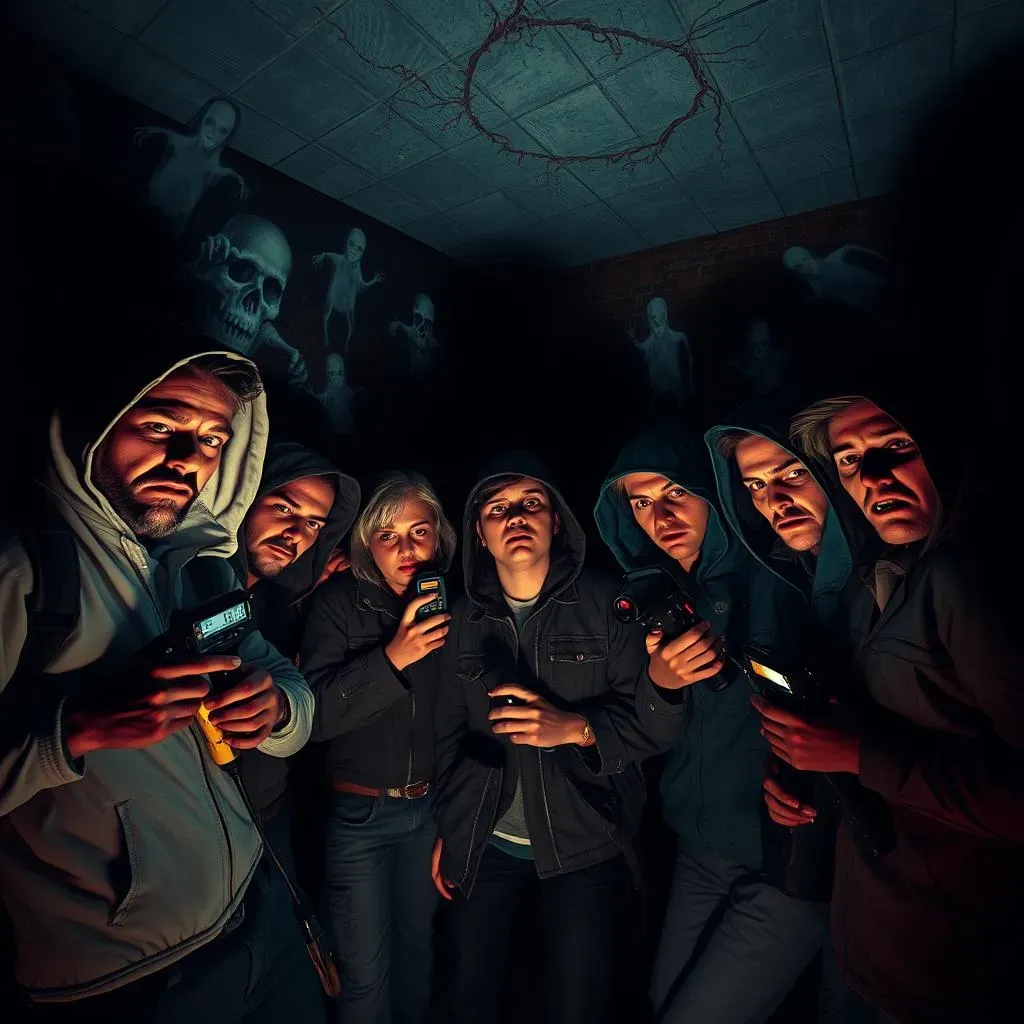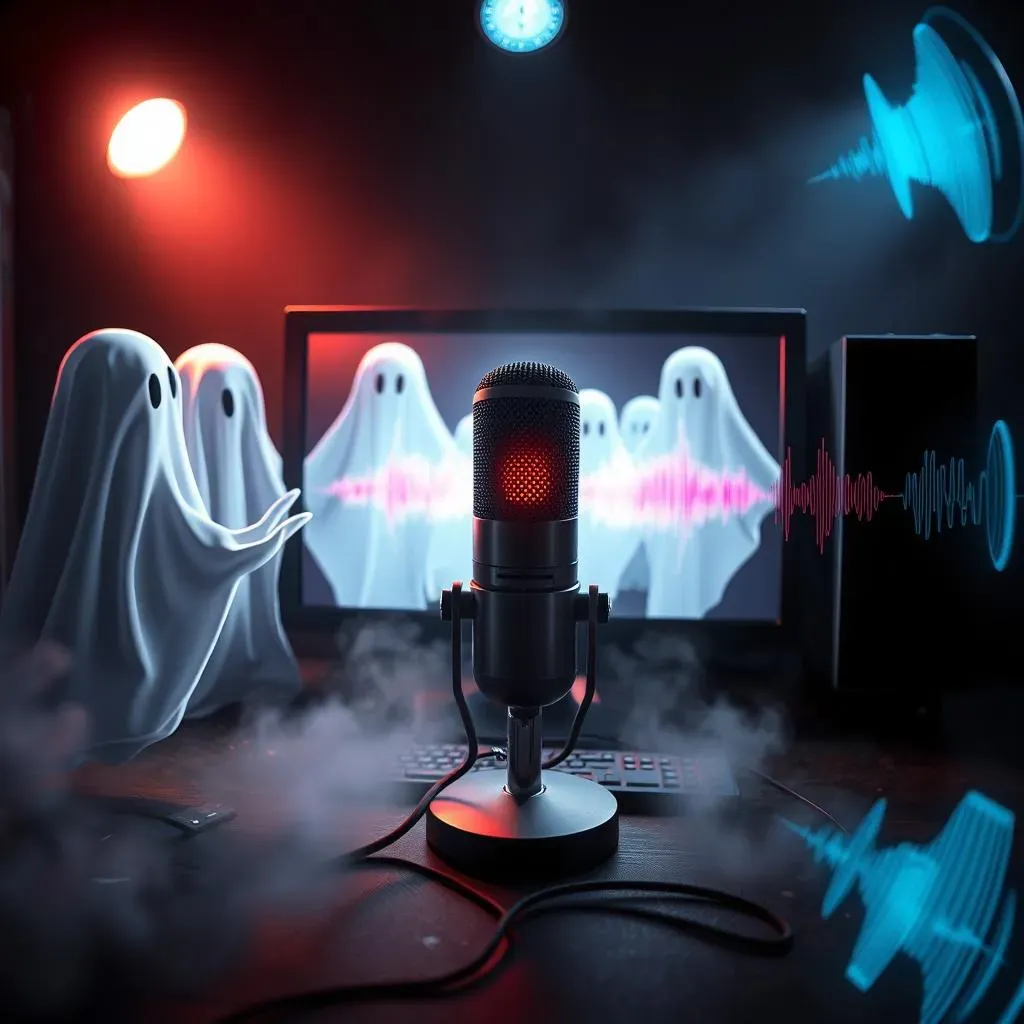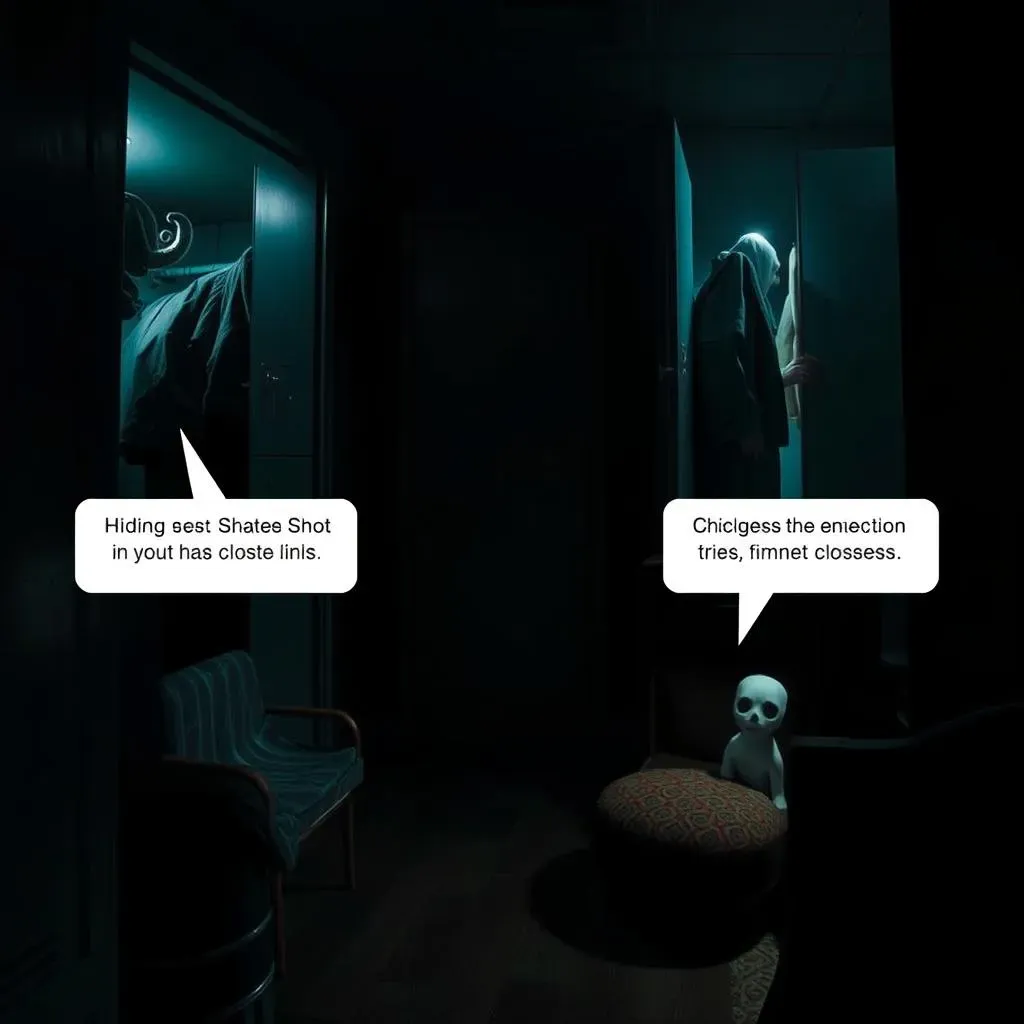Table of Contents
Ever wondered if those ghostly apparitions in Phasmophobia can actually *hear* you? The question of "can Phasmophobia hear you" is a crucial one for survival in this terrifying game. This article will dissect the game's audio mechanics, revealing exactly how ghosts detect your presence. We'll explore the nuances of Phasmophobia's voice recognition system, explaining how your whispers, shouts, and even accidental noises can impact your chances of escaping with your sanity intact. We'll then arm you with practical strategies and tips to minimize your auditory footprint, maximizing your chances of completing your investigation without becoming a spectral snack. Prepare to learn the secrets to mastering stealth and outsmarting the ghosts – your survival depends on it!
Can Phasmophobia Hear You During Hunts?
Can Phasmophobia Hear You During Hunts?
The Hunt is On: Ghostly Hearing During Hunts
So, you're knee-deep in a Phasmophobia hunt. The lights are flickering, objects are moving, and your heart is pounding like a drum solo. The big question is: can the ghost hear you screaming? The short answer is... kind of. During hunts, ghosts don't passively listen like they do during the investigation phase. Instead, they use a sort of "line of sight" detection. Think of it like this: the ghost fires an invisible laser beam from its head. If that beam hits you, you're toast. Your panicked shouts won't make a difference; it's all about whether you're directly in their visual path. So, hiding is key. Find a good hiding spot, hold your breath, and pray they don't spot you. Remember, even the quietest whisper might be the sound that ends your game. Check out our guide on fast ghosts to help you prepare!
It's worth noting that certain ghosts have different hunting mechanics. Some might be more sensitive to noise than others, while some might have a broader "cone of vision." Understanding these individual ghost behaviors is crucial for survival. For example, if you know you're dealing with a Wraith, you might want to consider your hiding strategy more carefully than if you're facing a Revenant. Knowing the ghost's specific abilities can give you a considerable advantage. Want to learn more about the environment? Our guide on medium maps might help.
Ghost Type | Hunt Sensitivity to Noise | Hunting Strategy |
|---|---|---|
Wraith | Low | Hide well, use the environment |
Revenant | High | Run and hide; don't stay in one place for long |
Banshee | Medium | Stay far away from the targeted player |
Beyond the Hunt: Passive Hearing and Investigation
Even outside of hunts, the question of "can Phasmophobia hear you" remains relevant. During the investigation phase, ghosts are passively listening, picking up on your every sound. This is where your mic and voice commands become critically important. While the game doesn't explicitly state how sensitive ghosts are to different volumes, it's generally accepted that quieter interactions are less likely to trigger a hunt. Think of it like sneaking around a sleeping lion. A loud roar will definitely wake it up, but a soft footstep might go unnoticed. Using push-to-talk is highly recommended, as it prevents your random background noises from alerting the spirits. Remember, even your breathing can be a giveaway! Knowing what to expect can be a game-changer, so check out our guide on ghost orbs to learn more.
Interestingly, the game’s voice recognition isn’t perfect. Sometimes, it might misinterpret a sound or fail to register a command. This doesn't mean the ghosts are deaf; it simply means the game's interpretation isn't always flawless. Therefore, relying solely on voice commands without visual confirmation is risky. Combining your auditory observations with visual clues is essential for a successful investigation. Are you playing solo? Our guide on solo play might be of interest.
- Use push-to-talk to minimize noise
- Speak quietly and only when necessary
- Combine voice commands with visual clues
Understanding Phasmophobia's Voice Recognition: How it Works and What it Means
Understanding Phasmophobia's Voice Recognition: How it Works and What it Means
How Phasmophobia "Hears" You
Phasmophobia uses your computer's microphone to pick up your voice. It's not just listening for keywords; it's analyzing the sound waves themselves. Think of it like a super-sensitive bat using echolocation – the game's "ears" are constantly scanning for any unusual audio activity. The louder you are, the more likely the ghost is to notice you. This sensitivity isn't just about volume; the frequency and tone of your voice also play a role. A high-pitched scream is going to be more noticeable than a quiet mumble. Remember, even background noises can be picked up, so using push-to-talk is a lifesaver. Want to know more about the game's technical aspects? Check out our guide on Phasmophobia on Mac.
The game's voice recognition is surprisingly sophisticated, but it's not perfect. It can sometimes struggle with background noise or misinterpret commands. This doesn't mean the ghosts are ignoring you; it just means the game's interpretation might be off. This is why it's vital to combine audio clues with visual observations. If you think you heard something, don't just rely on that; look around for visual confirmation. Want to learn more about the different kinds of ghostly evidence? Our article on ghost orbs might be helpful.
- Loud noises are more easily detected.
- High-pitched sounds travel further.
- Background noise can interfere with detection.
Voice Commands and Ghostly Reactions
While voice commands are a useful tool for gathering information, they're not without risk. Using them too frequently or too loudly can attract unwanted attention. Think of it as shouting in a library – you'll get everyone's attention, and not in a good way. The game's voice recognition system is designed to identify specific phrases related to investigation, but it's not foolproof. A misinterpretation could lead to an unexpected hunt, so use caution. Want to learn more about the different kinds of ghosts you might encounter? Check out our article on fast ghosts to help you prepare!
The effectiveness of voice commands also depends on the ghost type. Some might react more strongly to certain questions than others. This adds another layer of complexity to the game, encouraging players to experiment and learn the nuances of each ghost's behavior. Remember, understanding the ghosts is half the battle! Are you new to the game and wondering about the different maps? Our guide on medium maps might be useful.
Voice Command | Potential Ghost Reaction |
|---|---|
"Is anyone here?" | May trigger a response, potentially a hunt |
"What's your name?" | Might reveal the ghost's identity |
"Show yourself!" | Highly likely to trigger a hunt |
Minimizing Your Auditory Footprint: Strategies for Success
The key to surviving in Phasmophobia is minimizing your auditory footprint. This means being mindful of your volume, using push-to-talk effectively, and avoiding unnecessary noise. Think of it like being a ninja – silent and deadly. The more subtle you are, the less likely the ghosts are to detect you. This is especially critical during hunts, where even a small sound can be the difference between life and death. This careful approach to noise management is essential for successful investigations. Curious about the different platforms where you can play Phasmophobia? Check out our article on Phasmophobia platforms.
Remember, even seemingly insignificant sounds can alert the ghosts. The rustling of papers, the clicking of your mouse, or even your breathing can be picked up by their sensitive ears. Therefore, maintaining a quiet and controlled environment is crucial for long-term survival. Want to learn more about the game's mechanics and how to improve your gameplay? Our ultimate guide on Phasmophobia consoles might be helpful.
- Use push-to-talk (PTT) religiously.
- Minimize background noise.
- Speak quietly and only when necessary.
- Use headphones to reduce ambient noise.
Tips and Tricks to Avoid Detection: Mastering Stealth in Phasmophobia
Tips and Tricks to Avoid Detection: Mastering Stealth in Phasmophobia
Mastering the Art of Ghostly Evasion
So, you want to become a Phasmophobia ninja? The ability to avoid detection is less about superpowers and more about smart play. It's a game of inches, of carefully planned movements and strategic hiding spots. Remember those line-of-sight hunts? Knowing where to hide is half the battle. Think about the map layout; are there closets, lockers, or even just strategically placed furniture that can provide cover? Mastering these hiding spots is crucial, especially when dealing with faster ghosts. Want to know more about the different types of ghosts? Check out our guide on fast ghosts in Phasmophobia.
It’s also about understanding the ghost’s behavior. Some ghosts are more easily distracted than others. A well-placed distraction – like a strategically thrown object – can buy you precious seconds to escape. But don't rely on this all the time; it's not a foolproof method. Sometimes, the best strategy is simply to remain perfectly still and hope they pass you by. Learning the nuances of each ghost type is critical for your survival, so understanding the game mechanics is key! Check out our article on medium maps in Phasmophobia to better understand the environments you'll be facing.
- Identify potential hiding spots before the hunt begins.
- Understand each ghost's hunting patterns.
- Use distractions strategically (but sparingly).
Utilizing the Environment to Your Advantage
The environment is your greatest ally in Phasmophobia. Learn to use it to your advantage. Shadows, corners, and even the layout of the rooms can provide crucial cover. Remember, ghosts aren't perfect; they have limitations. Use these limitations to your advantage. A well-placed hiding spot can make all the difference between surviving the night and becoming another ghost story. Are you curious about the different kinds of evidence you might encounter? Check out our article on ghost orbs and what they mean.
Think like a ghost. Where would *you* hide if you were trying to ambush unsuspecting players? Consider the line of sight, the potential escape routes, and the overall layout of the map. The more you understand the game's environment, the more effectively you can use it to your advantage. Are you playing alone and looking for some tips? Check out our article on playing Phasmophobia solo for additional strategies.
Hiding Spot | Pros | Cons |
|---|---|---|
Closets | Easy to conceal, often overlooked | Limited space, easily searched |
Lockers | Provides excellent cover | Can be noisy to open and close |
Behind Furniture | Good cover, easily accessible | Dependent on furniture placement |